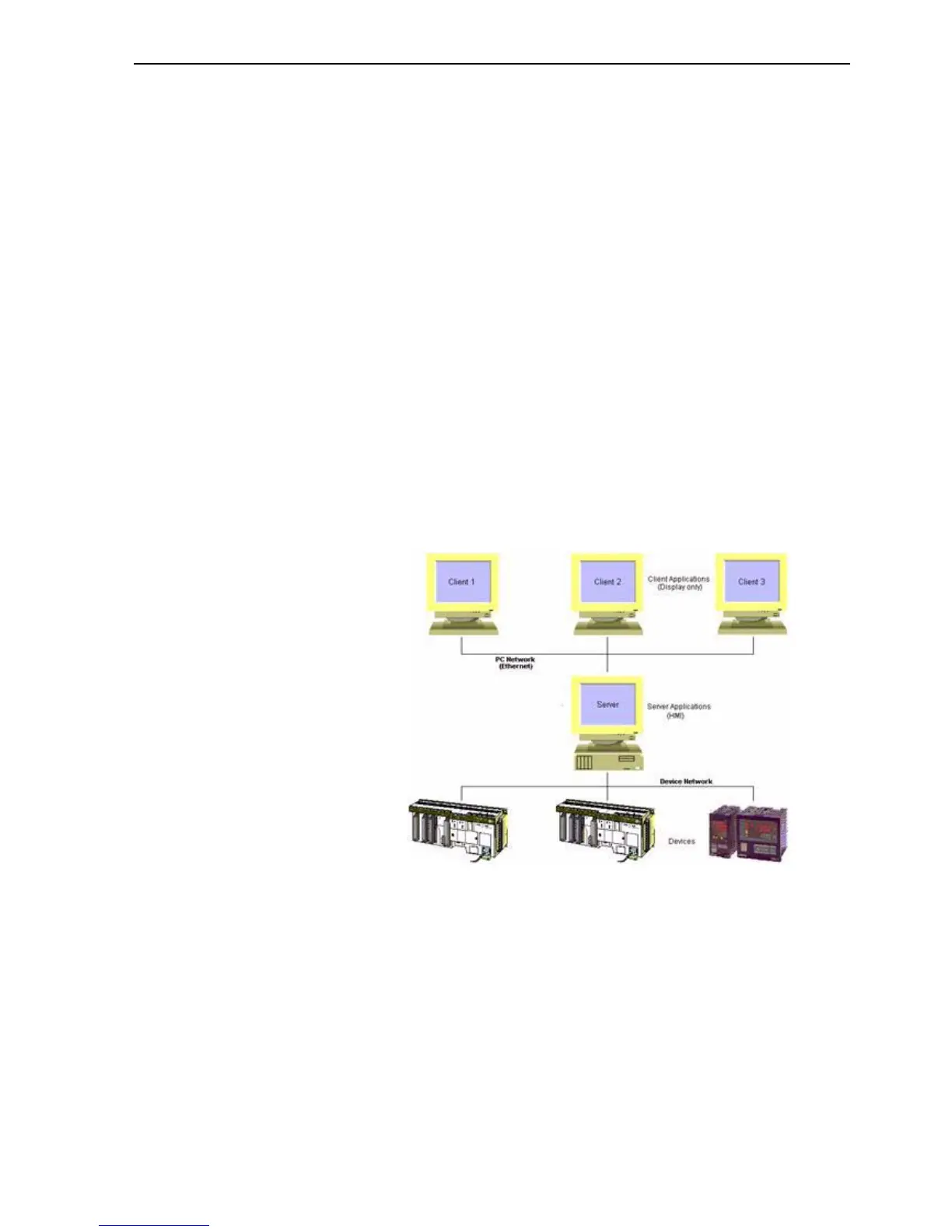Two Tier, Client - Server or Master - SlaveSECTION 18 Connecting to a remote CX-Su-
253
SECTION 18
Connecting to a remote CX-Supervisor
application
This chapter explains how to connect multiple CX-Supervisor applications
together to form a distributed solution. Point data from one application can be
'shared' directly with other CX-Supervisor applications across the PC network.
Depending on the requirements, there are many reasons and topographies for
interconnecting CX-Supervisor applications.
18-1 Two Tier, Client - Server or Master - Slave
One application is configured as a Server application or Master. The Server is
often the main station, and is permanently switched on, and often used locally
for HMI for example but could have no graphical element, which is termed a
Blind Server. It has direct access to the Devices or Device network and is
responsible for collecting the data from the devices.
Other applications may connect to the Server to read and even control values
in the Server. These applications are called Client applications or Slaves.
Clients are often used remotely and therefore are often configured 'display-
only' applications, transferring the data from the Server using the corporate PC
network. The Clients do not talk directly to the devices, and often only connect
when required.
18-2 Peer to Peer
Several applications are written to share data with each other. Actually, an
application is written as a Server to connect directly to a device, but is also a
Client using other Servers to connect to other devices through the corporate
network.

